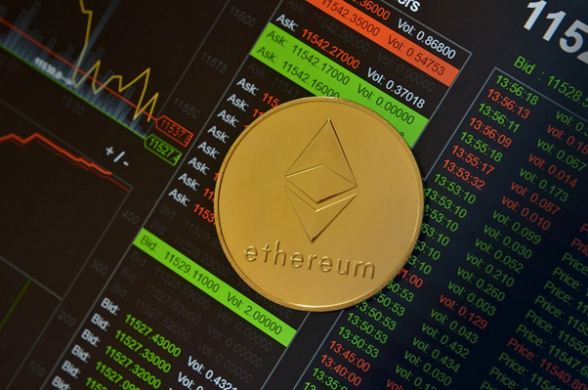Stablecoins, and Decentralized Finance (DeFi) are here to revolutionize the financial game. DeFi is quickly becoming one of the most talked-about topics in the fintech space – and for a good reason! These technologies have opened up a world of possibilities that many wouldn’t have even dreamed of just a few years ago.

Stablecoins and Decentralized Finance (DeFi): How They are Changing the Game
They allow users to manage their funds and maximize transparency, security, and usability – making them perfect for everyone, from individuals looking for an easy way to handle money transfers to high-net-worth institutions aiming for robust risk management strategies. We’ll explore what stablecoins and DeFi are, how they work together, and how they make bitcoin trading more profitable; fasten your seatbelt as we dive in!
What are stablecoins?
Stablecoins are digital currencies whose value is anchored to that of a fiat or commodity or any other stable asset. The excessive volatility of Bitcoin (BTC) and other prominent cryptocurrencies has rendered them unsuitable for everyday transactions, but stablecoins attempt to address this problem. Based on the method used to maintain their value, stablecoins may be classified into three categories.
Fiat-Backed
Stablecoins collateralized by a fiat currency, such as the U.S. dollar, are called Fiat-Backed Stablecoins. Independent third parties hold and audit these reserves consistently. Common Fiat-Backed Stablecoins are USDT and BUSD, pegged in value to the dollar and backed by U.S. dollar reserves.
Algorithmic
Technically, stablecoins based on algorithms may or may not have underlying reserves. Algorithmic stablecoins maintain their value by using an algorithm to determine supply, which can be computer software that follows a predetermined formula.
This is not so far from central banks, which similarly don’t use a reserve asset to maintain the value of the currency they issue. The distinction is that a central bank establishes monetary policy openly based on accepted guidelines, and the legitimacy of that policy is greatly enhanced by its role as the issuer of legal money.
Crypto-Collateralized
Other digital currencies guarantee the stability of crypto-collateralized stablecoins. However, the cryptocurrency’s value in reserves surpasses the value of the stablecoins created, since the reserve cryptocurrency may likewise be subject to extreme volatility. For example, holding a cryptocurrency worth $10 million as a reserve is possible while issuing a crypto-backed stablecoin for $5 million to protect against a 50% drop in the reserve cryptocurrency’s value.
What Is Decentralized Finance (DeFi), and how does it work?
DeFi is a new financial technique constructed on secure distributed ledgers, much like the ones used by cryptocurrencies. Consumers depend on guidelines established by banks to access funds and financial services quickly. DeFi is an alternative to the centralized financial system that gives power to people via decentralized digital transactions. DeFi also does away with the need to pay the fees often associated with utilizing banking institutions. Instead, DeFi allows users to save their money in a safe digital wallet, send and receive money in seconds, and use it wherever they can access the internet.
The Role of Stablecoins in DeFi
Despite its widespread adoption, Bitcoin’s price is inherently volatile. This instability is excellent for traders but makes transactions like buying and selling a bit unpredictable. Stablecoins, as their name indicates, is an attempt to solve this issue by guaranteeing a constant value for the cryptocurrency.
An investor who deposits Ethereum (ETH) into the Compound protocol in the hopes of earning interest may end up losing money if the value of ETH falls below their initial investment. Alternatively, if the same investor instead used a stablecoin like USDC, the underlying asset’s value would stay stable, and the investor’s return would be unaffected by fluctuations in the value of cryptocurrencies.
Digital investments in the DeFi market provide higher returns than conventional fixed-interest assets like savings accounts, money market funds, or bonds. The Dai stablecoin is the most used asset in the decentralized financial ecosystem. Dai stablecoins mirror the value and consistency of the U.S. dollar, making them a decentralized, secure asset.
How stablecoins and DeFi are changing the game for cryptocurrency investors
Stablecoins
Stablecoins have reduced market volatility, and improved liquidity since traders may hedge against price drops without withdrawing their funds from exchanges. Since borrowing, lending, and derivatives all need a stable and trustworthy base value, stablecoins also help to strengthen the link between conventional banking and crypto markets. These days, more and more people are turning to stablecoins as a way to hedge against the volatility of traditional currencies.
Stablecoins’ meteoric ascent has also prompted governments to investigate how their central banks can issue their digital currency, known as Central Bank Digital Currency.
DeFi
DeFi’s foundational principle is the facilitation of P2P financial transactions. A P2P DeFi transaction occurs when two people agree to trade cryptocurrencies for products or services without using a third party.
Individuals may lend, sell, and borrow money from one another, thanks to software that logs and validates these monetary transactions in decentralized financial databases. Moreover, thanks to its centralized collection and verification processes, investors may access data in a distributed database from anywhere.
In DeFi, P2P lending may help people get the money they need, and an algorithm would pair them up with friends willing to give them money on their terms. P2P transactions are recorded on the blockchain in the same way as any other transaction completed via a dApp, or decentralized application. The benefits of using DeFi include the following:
- Global availability: Any user with an internet connection may do business on a DeFi platform.
- Low transaction costs and high-interest rates: Using DeFi networks, two parties may directly negotiate interest rates and offer loans.
- Safety and anonymity: These are guaranteed by the immutability of the blockchain and the public accessibility of all transaction records and smart contracts.
- Autonomy: DeFi systems are independent of any centralized financial organizations.

 Hot Features
Hot Features













